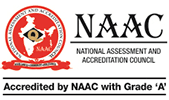The world of supply chains is buzzing with change and at the heart of this transformation is the rise of refurbishment, paired with a bold new commitment to transparency. Why are so many businesses, activists, and buyers interested in seeing behind the curtain? In today’s economy, supply chain transparency is not just a buzzword, it’s a necessity, especially as refurbishment reshapes how products live, die, and live again. Open reporting of greenhouse gas emissions, resource use, and waste motivates continuous improvement and supports collaborative business models. When companies show their work openly, they are rewarded with partnerships, investment, and a sturdy reputation.
The Big Transparency Shift
Refurbishment is not just about “fixing the old” but a meaningful choice in a circular economy. When companies restore everything from electronics to cars and clothing, they reduce waste, support sustainability, and often save consumers’ money. Brands like Apple, Dell, and BMW have embraced refurbishment, carefully mapping each step their products take like collecting, inspecting, processing, and reselling. For example, Apple’s certified refurbished devices come with thorough documentation of their refurbishment journey, giving customers’ peace of mind and showing the company’s ethical commitment.
Imagine buying a refurbished smartphone. You want it to work well, but you also want to know its backstory. Was it responsibly repaired? Were replacement parts ethically sourced? Did the process hurt the planet or exploit anyone along the way? Modern consumers expect answers, and businesses are feeling the pressure. Government regulations, social movements, and market competition all push firms to share their sourcing, refurbishment, and labor practices with the public.
How Real Companies Are Leading
Operations managers today are number-crunchers along with storytellers, tasked with explaining how, where, and why their products are made. At Philips, for example, transparency comes from working closely with suppliers in the healthcare refurbishment sector, demanding clear sustainability standards and offering robust documentation for every item. Patagonia, a leader in outdoor wear, makes it a point to map its textile supply chain with details on factories, farms, and mills. This openness helps reduce negative impacts and keeps workers’ rights front-and-center. In fashion, Levi’s offers buy-back programs while tracking the origins of reused materials, striving for ever-greater openness despite the industry’s complexity.
Statistics show that the sales for sustainably labeled products jump 28% faster than those without such credentials, according to McKinsey. More than half of surveyed manufacturers adopted new transparency tools in the past two years to keep up with circular economy demands. In 2024, over 76% of European shippers faced disruptions because they were unable to trace their supply chain well enough, especially when dealing with refurbished goods.
Supply Chain Mapping: Connecting the Dots
If a supply chain is a river, refurbishment is the current that loops back, bringing products to life again – even better than before. To operate in this world, businesses need to track every item’s path: where it started, who handled it, how it was treated. It’s not enough just to talk about transparency, operations managers need hard evidence. Digital mapping systems, blockchain tools, and IoT sensors create “digital twins” that is a virtual version of products and supply chains that record every handoff, every repair, and every material swap. For instance, Amazon Renewed ties each refurbished product to a documented history, making authenticity and ethical sourcing easier to prove. IKEA’s product passports for refurbished furniture reveal detailed histories through QR codes and buyers know they are making a responsible purchase.
Transparency is now an expectation, not just a “nice-to-have”. Shoppers want clear details not only about a product, but about its entire refurbishment journey. Brands that answer this call see greater loyalty, higher sales, and a healthy dose of public trust. Of course, the road to full transparency is rocky. Small suppliers in developing regions sometimes lack the gadgets and know-how to share their data. Information can get muddled between different systems, especially when products pass through second-hand vendors. Tight regulations make mistakes costly, and the shifting line-up of international laws means companies must stay agile. What does the future hold? Managers are doubling down on digital twins, smart virtual models that track every twist and turn in a product’s journey. Blockchain networks are expanding across industries, making it easier to share data, prevent fraud, and keep everyone honest. Supplier networks are becoming more collaborative, as major brands help smaller partners upgrade technology and reporting standards.
Readings
- Circulareconomy.earth (2023). “Supply chain traceability and transparency for a global circular economy”. https://circulareconomy.earth/publications/supply-chain-traceability-and-transparency-for-a-global-circular-economy.
- IBM (2024). “What is supply chain transparency?”. https://www.ibm.com/think/topics/supply-chain-transparency.
- Oracle (2023). “Supply Chain Transparency Defined: Why It Matters and Its Benefits”. https://www.oracle.com/in/scm/supply-chain-transparency/.
- Supplychaindigital (2024). “Top 10: Trends of 2024 in Supply Chain”. https://supplychaindigital.com/digital-supply-chain/top-10-trends-2024-in-supply-chain.











